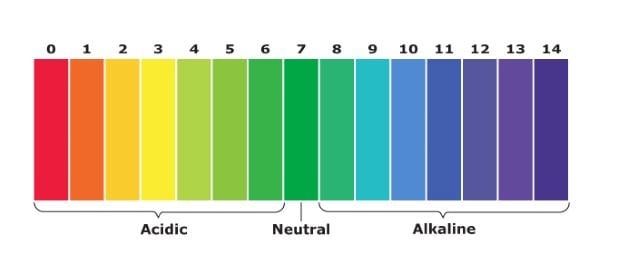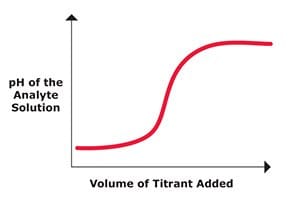Guide on How to Use Proteinase K in Different Procedures
How do you dissolve Proteinase K powder?
Proteinase K (Pro K, ProK) is a commonly used protease enzyme in molecular biology, often used for DNA or RNA extraction or for protein digestion. To prepare a stock solution of Proteinase K, follow these steps:
1. Weigh out the desired amount of Proteinase K powder using a balance. The amount will depend on the specific protocol, but commonly used concentrations range from 10 to 100 mg/mL.
2. Add the Proteinase K powder to a tube or container.
3. Add an appropriate volume of buffer or water to the tube or container. The specific buffer or solvent used will depend on the application and protocol being followed. Commonly used buffers include Tris-HCl, ethylene diamine tetraacetic acid (EDTA), or TE buffer.
4. Mix the contents of the tube or container well by vortexing or pipetting up and down.
5. Incubate the tube or container at the recommended temperature and time for the specific protocol being followed. Proteinase K is most used at 37 °C, although some protocols may require higher or lower temperatures.
6. After incubation, the Proteinase K solution is ready to use for downstream applications.
Note: Proteinase K should be stored at -20 °C or below to maintain its stability and activity. It is important to protect proteinase K from exposure to heat, moisture, and other contaminants to ensure optimal performance.
Can Proteinase K dissolve in water?
Proteinase K (Pro K, Prok) can dissolve in water, but the specific solvent used will depend on the application and protocol being followed. Proteinase K is a protease enzyme that can be denatured or inactivated by certain solvents or conditions, so it is important to follow the manufacturer's instructions, or the specific protocol being used to ensure optimal activity.
While proteinase K is commonly dissolved in water or buffer solutions such as Tris-HCl or TE buffer, it is important to note that the specific buffer or solvent used can affect the stability of the enzyme. For example, proteinase K is inactivated by high concentrations of detergents such as sodium dodecyl sulfate (SDS), so it should not be dissolved in solutions containing high concentrations of these reagents.
Before dissolving proteinase K in water or any other solvent, it is important to review the specific protocol and manufacturer's instructions to ensure that the correct solvent and conditions are used for the intended application.
What is the best pH for Proteinase K?
The optimal pH for proteinase K activity is around 8.0 to 9.0. Proteinase K is a serine protease that has broad specificity for cleaving peptide bonds in proteins. The enzyme is active over a wide pH range, with some activity observed at pH 4.0 to 12.0, but the highest activity is typically observed at neutral to slightly basic pH values.

It is important to note that the specific pH requirements may vary depending on the application and protocol being used. For example, some protocols may require a specific pH range for optimal lysis or digestion of specific substrates or samples. In addition, factors such as temperature, salt concentration, and other reagents in the reaction may also affect the optimal pH for proteinase K activity.
Does proteinase K work at room temperature?
Proteinase K is active over a wide range of temperatures, including room temperature, but the optimal temperature for proteinase K activity is around 37 °C. While some activity may still be observed at lower or higher temperatures, the enzyme may be less efficient or slower at cleaving peptide bonds at these temperatures.
In some cases, protocols may use a combination of incubation times and temperatures to optimize proteinase K activity for a specific application. For example, some DNA extraction protocols may use a brief incubation at room temperature followed by a longer incubation at 55-65 °C to ensure complete lysis and digestion of cellular components.
Overall, while proteinase K can be active at room temperature, the optimal temperature for most applications is 37 °C. It is important to optimize the incubation conditions for the specific protocol being used to ensure optimal activity and performance of proteinase K.
What is the incubation time for proteinase K?
The incubation time for proteinase K can vary depending on the specific protocol and application being used. The recommended incubation time can range from a few minutes to several hours or even overnight, depending on the intended use of the enzyme.
For example, in DNA extraction protocols, proteinase K is often used to digest cellular proteins and other contaminants to release DNA from the cells. The recommended incubation time in this application can range from 30 minutes to several hours, depending on the sample type, quantity, and other factors.
In general, the incubation time for proteinase K is determined by optimizing the digestion efficiency and minimizing the risk of over-digestion or degradation of the target sample or molecule. It is important to follow the specific protocol and manufacturer's instructions for the recommended incubation time for the intended use of proteinase K.
Additionally, it is important to note that the incubation time for proteinase K can be affected by other factors such as temperature, pH, salt concentration, and the presence of other reagents or inhibitors. It is important to optimize the incubation conditions for the specific protocol being used to ensure optimal activity and performance.
What can inhibit Proteinase K?
Proteinase K can be inhibited by a variety of factors, including denaturants, detergents, and protease inhibitors. The susceptibility of proteinase K to inhibition can depend on the specific application and protocol being used.
Some common inhibitors of proteinase K include:
1. SDS: High concentrations of SDS can denature and inactivate proteinase K.
2. EDTA: EDTA is a chelating agent that can bind to metal ions that are essential for proteinase K activity.
3. Urea: High concentrations of urea can denature and inactivate proteinase K.
4. Detergents: Some detergents such as Triton X-100 or Tween® 20 can inhibit proteinase K activity, especially at high concentrations.
5. Protease inhibitors: Some protease inhibitors, such as phenylmethylsulfonyl fluoride (PMSF), can irreversibly inhibit proteinase K activity.
It is important to note that the susceptibility of proteinase K to inhibition can depend on the specific application and protocol being used. For example, in some DNA extraction protocols, the presence of chaotropic salts or detergents can enhance the activity of proteinase K, while in other protocols, these same reagents may inhibit the enzyme.
When using Proteinase K, it is important to follow the specific protocol and manufacturer's instructions to optimize the activity of the enzyme and minimize the risk of inhibition.
What happens if you use too much Proteinase K?
Using too much proteinase K can lead to over-digestion of the target sample or molecule, which can result in degradation or loss of activity. The optimal amount of proteinase K for a specific application can depend on the sample type, quantity, and other factors.
In DNA extraction protocols, for example, using too much proteinase K can result in over-digestion of cellular components and other contaminants, leading to degradation of the DNA and reduced yields. Over-digestion can also cause the release of unwanted inhibitors, such as heme or humic acids, which can interfere with downstream applications.
Over-digestion may also lead to the digestion of the target molecule or structure. For example, in protein digestion protocols, using too much proteinase K can lead to the degradation of the protein of interest, reducing its yield or activity.
The optimal amount of Proteinase K can vary depending on the sample type, quantity, and other factors. It is recommended to use a titration curve to determine the optimal amount of proteinase K for a specific application, rather than using a fixed amount that may lead to over-digestion or degradation.

Sigmoidal graph showing how the volume of titrant added increases the pH of the analyte solution
Other Proteinase K Information
To learn how Proteinase K is used blood DNA/RNA extraction, visit How Proteinase K can be used in Blood DNA Extraction.
To learn how Proteinase K is used blood DNA/RNA extraction, visit How Proteinase K can be used in Tissue Samples.
How do you find the best Proteinase K supplier? Visit How to Determine the Best Product and Supplier for Proteinase K
How to Order Large Quantities of Proteinase K
Bulk capabilities and custom pack sizes of Proteinase K are available for your specific application. Complete the form to receive more information on what we have to offer.
Materials
References
To continue reading please sign in or create an account.
Don't Have An Account?